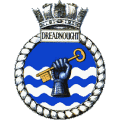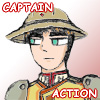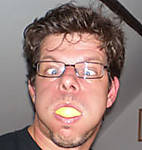Alrighty, a bigger update this time. As the Kongo comes closer to completion, you'll see me coming out of cruise control on the Hiryu and more of my A-Game coming into play.

This mainly shows how I make my 1/700 water bases that various folks have been asking for. Unfortunately, this won't be a complete tutorial until after the Hiryu's hull is painted and mounted in the water, but this is a good 90% of the process. When the entire process is done, I'll post it as a feature.
The first step is to build your hull to its main waterline component
and nothing more. The reason for this is that you'll be handling it a lot and you don't want to mess up any paint or break anything off. So, get the basic hull together, follow the steps shown, and then finish the hull (I add all above deck detail and rigging after the hull is mounted to the base).
Here is the base.

Aluminum foil is cut to size, allowing for a border along the base.

Crumple the foil into a loose ball multiple times. You may be tempted to make the ball tight and "crumply" in one shot, but I highly caution against this. The reason being is that it may hard to unroll the ball without tearing the foil.

Here is the foil, crumpled, and laid out on the base with the hull dry fit. Fold the four edges of the foil under about 1/8" to make a nice looking edge to the foil.


Spread glue in the middle area of where the foil will go. I use Weld Bond, which is kind of like a deluxe white glue.

While the glue is still wet, press the hull down into the foil to make a "settled" impression. This helps reduce a lot of the "riding" you see in a lot of builds where there are gaps between the hull and water.

Also, while the glue is still wet, use the back of your fingernail to make impressions in the foil where the wake is.

Glue down the edges of the foil and continue your wake indentations.


The foil secured and with the hull dry fit. I usually flatten out the foil ahead of the ship a little more to make the water less chaotic where the ship hasn't traveled. The foil behind the ship stays messy.


After the glue has dried, cut a square in the foil where the hull will go. Make sure the square is thin enough that it won't be seen under the hull. Make some scratches in the exposed base wood and the bottom of the hull. This is to give a secure glue anchor point for when you mount the hull.

Mask off the exposed base wood. Here is where you can straighten out any curved edges in your foil by masking a straight line with the tape. Primer is sprayed on. Then the base color is sprayed on. Spray cans are perfectly acceptable for this phase as it's more about coverage than precision.

The base color used here is Model Master Blue Angel Blue. Use lighter base colors for shallow water, darker for deeper.

Here is the secondary color I often use, the aptly named Deep Ocean. The white is for the wave crests. I like to use Reaper and Vallejo paints here as they can thin with water for easy application. The brush has stiff bristles cut short for effective dry brushing.

Heavily thinned Deep Ocean is blotted on with a medium sized brush. I like Deep Ocean as it has some green to add richness to the base color.

After the secondary color dries, put a coat of Future Floor Wax to the foil. Future gives a nice wet sheen which is good since water is... uh... well... wet.

The stiff brush is used to dry brush on the first phase of the water crests with the white.

This is a foundation and more white can be added (or subtracted) in the final phase, after the hull is mounted and we get a better idea of the overall color scheme of the scene. Here is the hull dry fit.

Phase One of the base is done. Now the base gets set aside until after the hull is painted and ready to mount. Because of this, Phase Two won't be shown for another couple updates.









 The forward underside should be a little more visible though, do to the shape, so maybe I won't have to...
The forward underside should be a little more visible though, do to the shape, so maybe I won't have to... 






The forward underside should be a little more visible though, do to the shape, so maybe I won't have to...




 I may try to put a tilted mirror at the edge of the water base and see if that works though.
I may try to put a tilted mirror at the edge of the water base and see if that works though.  Thanks for the idea!
Thanks for the idea!










 Next up is the wind deflector...
Next up is the wind deflector...













 All of that PE glare is blinding me!
All of that PE glare is blinding me!






























 I think that the process as shown would probably only work for really calm water (at port, etc.) due to the scale effect. If you're doing a 1/350 ship underway in open seas, even on a calm ocean, the foil process may be too small. OTOH, a foil overlay on larger wave shapes made with putty, etc., could be pretty neat...
I think that the process as shown would probably only work for really calm water (at port, etc.) due to the scale effect. If you're doing a 1/350 ship underway in open seas, even on a calm ocean, the foil process may be too small. OTOH, a foil overlay on larger wave shapes made with putty, etc., could be pretty neat... 









